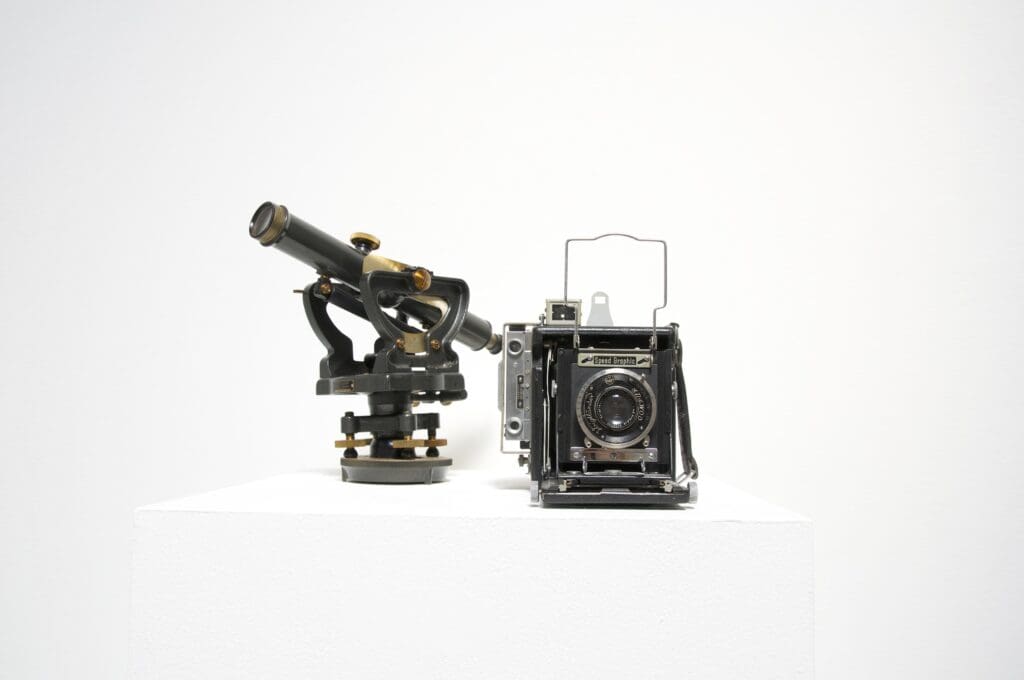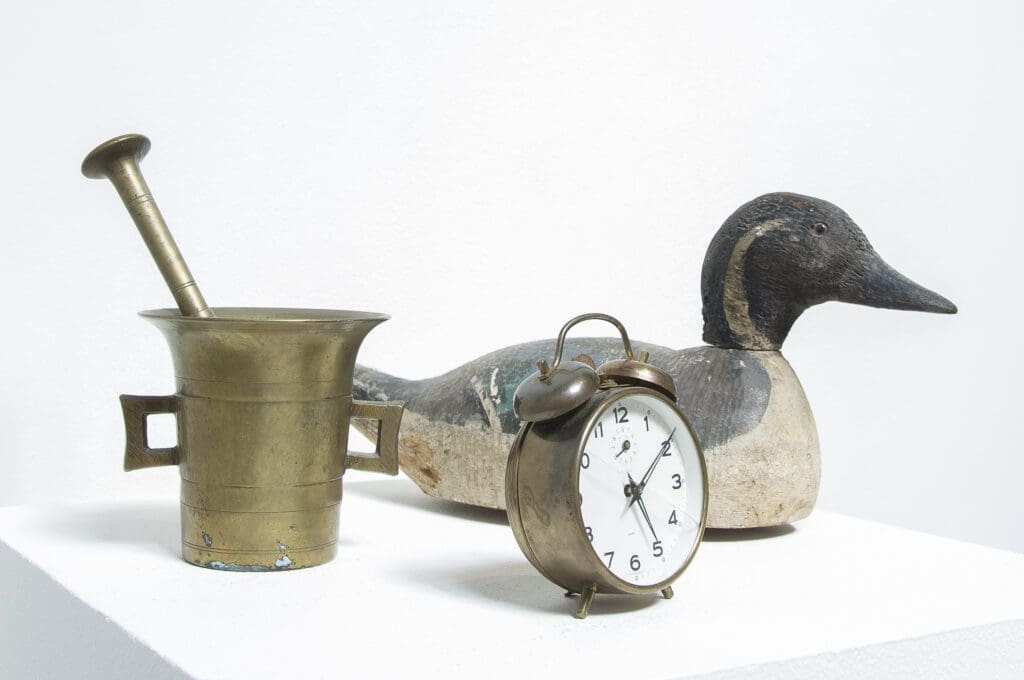In 1979, science fiction critic Darko Suvin popularized the term “cognitive estrangement” in his book Metamorphoses of Science Fiction. According to Suvin, cognitive estrangement, as presented in science fiction texts, “presents aspects of the reader’s empirical reality ‘made strange’ through a new perspective.”[1] Through the recasting of the everyday as spectacle, readers and viewers of science fiction are able to recognize their own reality and, in theory, “gain a rational understanding of the social conditions of existence.” (One need only look at the 10,000% [2] sales increase of George Orwell’s 1984 after Donald Trump’s inauguration to see but one example of the eagerness for the familiar “made strange” and the need to rationalize the absurdity of human existence.)
This concept of creating spectacle in an attempt to reframe the everyday is nothing new for experimental philosopher, artist, and writer Jonathon Keats. He has long been recasting the commonplace as strange in his artworks to bring attention to under-analyzed norms. (His Superego Suits, for instance, create a physical awkwardness for the wearer that encourages a reevaluation of relationships to other mass-produced wearable technologies such as smart watches.) His newest project, The Library of the Great Silence, which opened at Modernism Gallery in San Francisco and will work in conjunction with The SETI Institute long-term, is an ambitious concept intended to create meaningful dialogue between people on Earth as well as with extraterrestrial intelligences from other planets. The Library of the Great Silence is the first organization to lay the groundwork for intellectual collaboration between all forms of intelligence. Unlike a traditional library, it will not be collecting books but rather object signifying human transformation, such as currency, antibiotics, and sewing needles (at the Modernism micro-branch exhibit there was even a COVID rapid test and a smoked pre-rolled joint from a dispensary).
The idea is that by gathering signifiers of human transformation, beings of this world and from ones that are as of yet unknown will be able to “investigate existential threats to advanced civilizations, ranging from climate change to nuclear apocalypse, and invite terrestrials and beings throughout the universe to share their knowledge of how societies thrive or self-destruct.” Keats is particularly interested in concepts of human overreach and finding solutions to mitigate human impact on our planet’s resources. If communicating with extraterrestrial life sounds like something out of an Isaac Asimov or Ray Bradbury story, that is part of Keats’ intent: “By making what we take for granted manifestly strange, as weird as it really is, we can make sense of what we’re doing.”
Keats’ work often examines xenophobia and the human instinct to “other” that which is different. The Library is a form of resistance against this instinct, and Keats believes that “the search for extraterrestrial intelligence, and, more broadly, the search for life outside of our own world, is an important mode of introspection. When we get outside of ourselves and recognize ourselves in relation to the universe, the commonalities are much greater than the differences.”
On a practical level, the Library and its (hopefully) many branches could exist in a variety of iterations dependent upon the communities in which they are placed. Currently, the SETI Institute plans on launching a micro-branch at the Hat Creek Radio Observatory in Lassen Peak; and another branch, showcased at the Library’s exhibit at the Modernism Gallery, resembles a “little free library” not much different from those found in residential neighborhoods that encourage passersby to “take a book and leave a book.”
While Keats has been dubbed Chief Terrestrial Librarian, he stresses it’s important that he not be seen as the definitive figure on how the libraries should look or function. This is part of what makes the project such a radical act of resistance toward hierarchical systems of knowledge such as government, where designated individuals have access to more information than the community in which they govern. This is also the reason why the Library is about objects rather than books; the objects, in theory, do not require a shared language or education in order to interact with them or their collectors. The only requirement for engagement is a willingness to participate. “It’s not that I am averse to language or words,” Keats says when asked about the lack of books in his libraries. “I am simply skeptical of everything we work with on a regular basis that has agency or power. In the same way I am not opposed to money, but I have certainly done whatever I can to figure out how to undermine concepts that we might have about money or about transactions.”
If you’re finding it difficult to wrap your head around the idea of a library intended to elicit communication with other lifeforms, it should be noted that The Library of Great Silence is rooted in ideologies that have compelling functions in everyday life. In Keats’ essay about the original branch in Fontecchio, Abruzzo, where he developed an early prototype of the Library, he writes:
“Even if we never receive extraterrestrial visitors, a material archive of transformations will have global value that may be sufficient to extend the lifespan of human civilization. Manipulating existentially significant objects without the use of words—and without the underlying assumptions of language or limitations on who participates in the conversation—may facilitate comprehension of human behaviors that has previously eluded us, or even directly encourage beneficial practices such as cooperation.”[3]
This is what I find most compelling about Keats’ work—that he is striving to unify humanity through art and collaboration. Though the Library was conceived to facilitate communication with extraterrestrials, it is easy to imagine real-world applications in environments where catastrophic events have unfolded. (And honestly, does a place on earth exist that hasn’t witnessed catastrophe?) A key component of the Library is that there is no single figure responsible for deciding what does and doesn’t get archived. Instead, community members use a nomination process to determine which objects signify transformation. This form of consensus-generating inherently requires a type of communication and equality that is systematically unlike the majority of social relationships—this alone feels like a radical idea. In Abruzzo, this process “resulted in inclusion of detritus from the devastating L’Aquila earthquake of 2009. Nomination is a form of communication, surfacing concerns such as worries about rebuilding in geological conditions that have repeatedly decimated cities and villages.”[4] It allowed for community members to actively participate in creating the narrative of the transformed space they all shared.
It is easy to imagine how principles of The Library of Great Silence could be applied to fractured communities as a tool for healing. When viewed as an instrument for creating dialogue about how communal spaces are transformed, the implications of the Library feel incredibly powerful. This notion felt especially resonant while visiting the micro-branch exhibit in San Francisco where, just beyond the walls of the gallery, squalid sidewalks are overwhelmed with unhoused individuals the city has neglected. This dichotomy of clean interiors and wretched exteriors is just one of many that exist in San Francisco, where a housing crisis, often cited as a result of gentrification and extreme class disparity brought on by the influx of tech companies, has made national and international news for years. While talking with Keats, I couldn’t help but wonder how his innovative strategies for creating communal consensus might look in a space like the Tenderloin neighborhood. In 2016, a tech entrepreneur wrote a letter to the police chief and the mayor of San Francisco claiming, “The wealthy working people have earned their right to live in the city. They went out, got an education, work hard, and earned it. I shouldn’t have to worry about being accosted. I shouldn’t have to see the pain, struggle, and despair of homeless people to and from my way to work every day.”[5] (The writer, not surprisingly, was severely criticized for his unacknowledged privilege and entitlement.) What strikes me about this letter, even rereading it years later, is that what was so offensive to the writer was the mere witnessing of other’s pain—he was demanding the city accommodate his desire to experience ignorance as bliss. Keats’ work functions as antithetical to this sort of myopic self-absorption.
Though the Library may very well become a significant tool for communicating with extraterrestrial lifeforms, it feels more human than not—more urgently of today than of a science fictionaltomorrow. At its most human level, the Library, in Keats’ words, is a form of autobiography, and “when we read our autobiography, it leads our autobiography to take directions that it might otherwise not take. I think it is better to read our autobiography than to not.”
[1] Darko Suvin, Metamorphoses of Science Fiction (New Haven, CT: Yale University Press, 1979)
[2] Classic Novel ‘1984’ Sales Are Up In The Era Of ‘Alternative Facts’ : The Two-Way : NPR
[3] Jonathon Keats tells about The Library of the Great Silence in Fontecchio, Abruzzo | Triennale Milano
[4] ibid.
[5] S.F. startup CEO asks police to remove ‘riff raff’ from the city, sparking backlash – GeekWire



